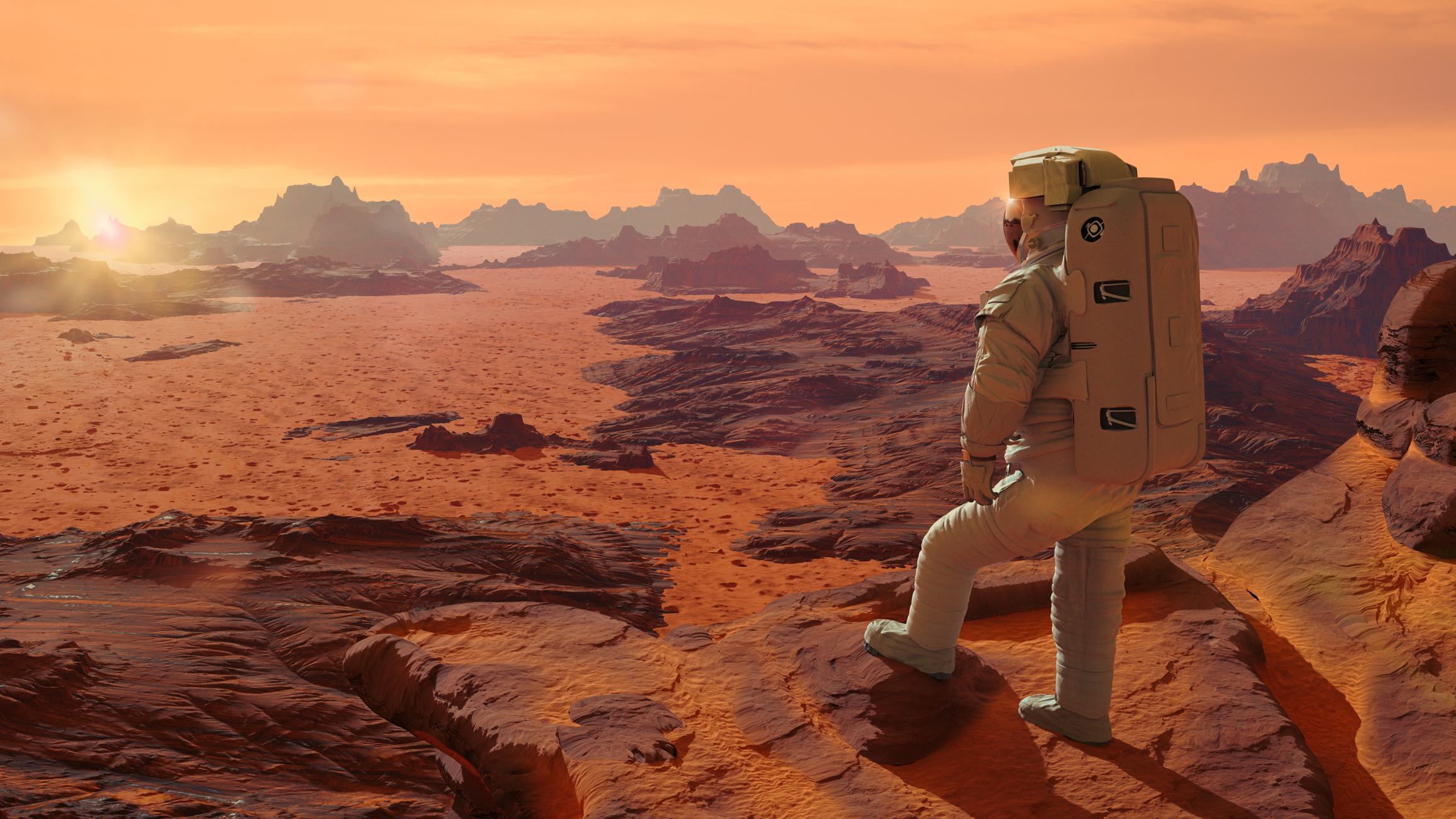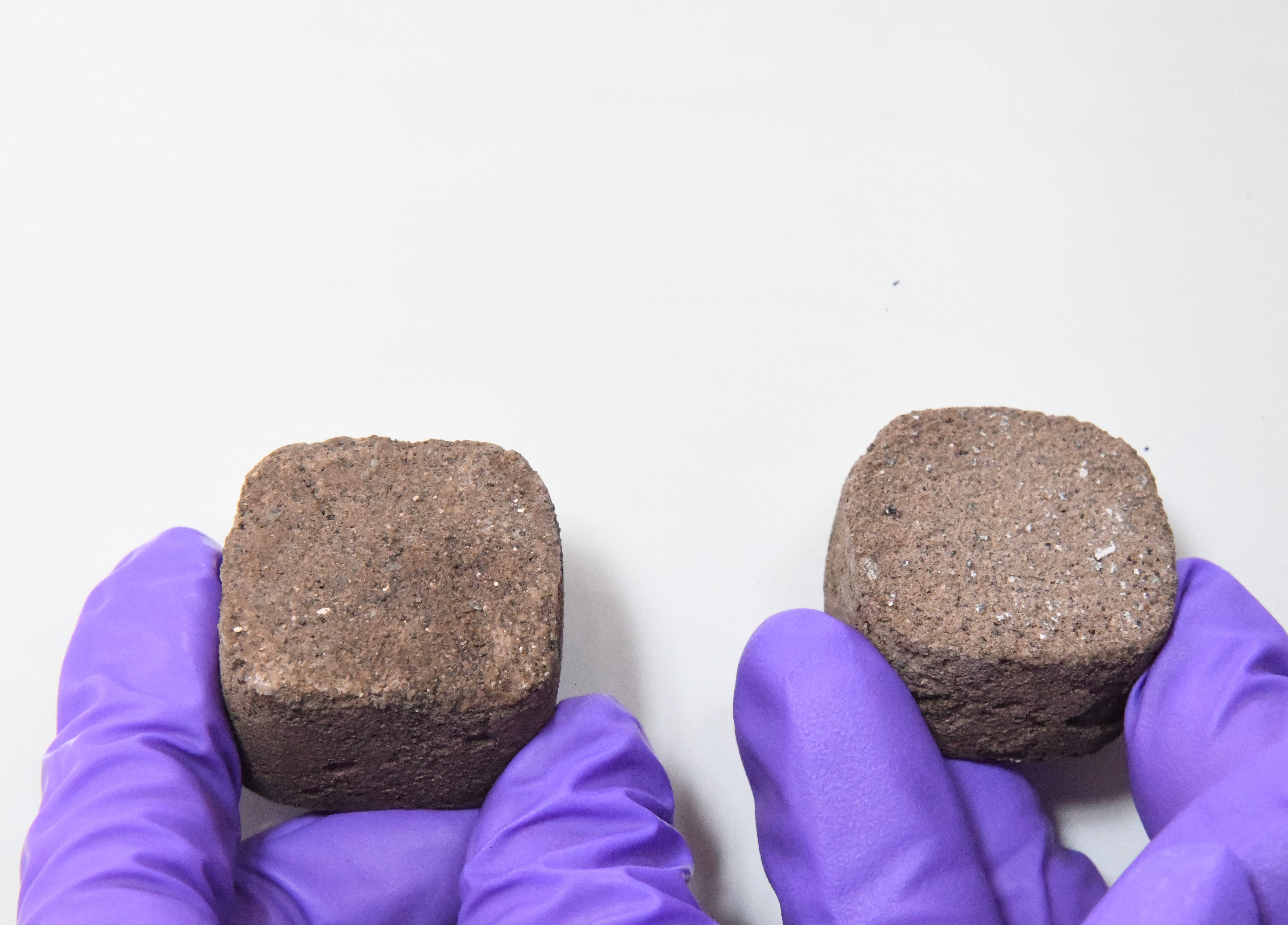Building a home on Mars … with bacteria?
New, proposed "space bricks" would mix Martian dirt, urea and bacteria.

Imagine a home on Mars. Is it filled with bacteria?
When we send humans to Mars, they'll need places to live. In a new study, a team of researchers from the Indian Institute of Science (IISc), in collaboration with India's space agency the Indian Space Research Organization (ISRO), suggest a new method to use bacteria to build these Martian habitats.
In this method, the team shows how "space bricks" for building a habitat on the Red Planet could be made with a combination of local Martian soil, bacteria and urea, a waste compound eliminated through urine by mammals.
Related: Newly discovered bacteria on space station could help astronauts grow plants on Mars

To make these Red Planet "space bricks," the team mixed together a "slurry" of simulated Martian soil made out of guar gum, which is a product of processed guar beans, combined with urea, the chemical nickel chloride and the bacterium Sporosarcina pasteurii. This mixture is blended together and can be poured into molds of any shape.
Previously, this team had tried to make "space bricks" with simulated lunar soil, but they were only able to make cylinder-shaped bricks, whereas, with their new Martian method in which they harden a "slurry" mix in a mold, they can make bricks of any shape, according to a statement.
After a few days in the mold, a chemical reaction transforms the "slurry" into a solid "space brick." Within the mixture, the bacteria and urea interact, causing the urea to crystallize and form crystals of calcium carbonate, a chemical compound that is often taken as a nutritional calcium supplement but which also makes up biological structures like shellfish skeletons and eggshells. The crystals come together with biopolymers, which are natural polymers produced by the bacteria, and the combination forms a sort of cement that holds the particles of the simulated Martian soil together.
Get the Space.com Newsletter
Breaking space news, the latest updates on rocket launches, skywatching events and more!
The team added the nickel chloride to the mixture after determining that the compound made it easier for the bacteria to grow in the "soil" mixture.
"Martian soil contains a lot of iron, which causes toxicity to organisms," co-author Aloke Kumas, an associate professor in the department of mechanical engineering at IISc, said in a statement. "In the beginning, our bacteria did not grow at all. Adding nickel chloride was the key step in making the soil hospitable to the bacteria."
With the new method, the team was able to successfully make "space bricks," but the researchers still have a lot of testing to do before such a technique is used on the Red Planet. The scientists plan to study how the bricks would respond to the Martian environment, particularly the planet's very thin, primarily carbon dioxide atmosphere, as well as the much reduced gravity.
According to the statement, the team plans to test their bricks in a device called the Martian Atmosphere Simulator (MARS), that the researchers have said will recreate Martian atmospheric conditions in a controlled laboratory setting. The team has additionally developed a microchip device to measure and study bacterial activity in space, according to the same statement.
One concern that this study doesn't address is planetary protection, the concern of contaminating the Earth. Scientists have to ensure that spacecraft missions will not carry any unintended bacteria or other contaminants that could cloud scientific findings or damage the world itself. (Planetary protection likewise requires measures to prevent a spacecraft bringing anything unintended back home to Earth.)
It is yet to be seen how a method like the one described in this study might work within planetary protection guidelines, which are especially stringent on Mars, where spacecraft like NASA's Perseverance rover are actively looking for evidence of past microscopic life.
This work is described in a study published April 14 in the journal PLOS One.
Email Chelsea Gohd at cgohd@space.com or follow her on Twitter @chelsea_gohd. Follow us on Twitter @Spacedotcom and on Facebook.
Join our Space Forums to keep talking space on the latest missions, night sky and more! And if you have a news tip, correction or comment, let us know at: community@space.com.

Chelsea “Foxanne” Gohd joined Space.com in 2018 and is now a Senior Writer, writing about everything from climate change to planetary science and human spaceflight in both articles and on-camera in videos. With a degree in Public Health and biological sciences, Chelsea has written and worked for institutions including the American Museum of Natural History, Scientific American, Discover Magazine Blog, Astronomy Magazine and Live Science. When not writing, editing or filming something space-y, Chelsea "Foxanne" Gohd is writing music and performing as Foxanne, even launching a song to space in 2021 with Inspiration4. You can follow her on Twitter @chelsea_gohd and @foxannemusic.









